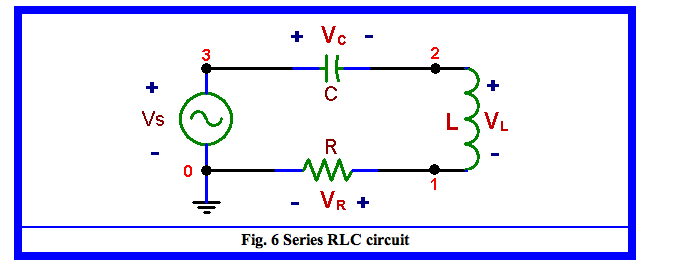

Voltage across component solve elec series#
Now We have two components R and L connected in Series and a voltage source to those components as shown below. In terms of differential equation, the last one is most common form but depending on situation you may use other forms. In that case you would need to modify the equation to give you the right form of equation.Īpplying the Kirchoff's voltage rule, you can combine all the terms shown above into a single equation as shown below. But in some cases you would need to describe the circuit so as to calculate the current or charges. Since most of the governing equation for electrical component is described in terms of Voltage, I would describe the circuit so as to calculate the voltage across the component. The voltage across the resistor and capacitor can be described as shown below. The governing equation is also based on Kirchoff's law as described below. In this example, We have two components R and L connected in Series and a voltage source to those components as shown below. Now let's expand the circuit a little bit further. Now let's assume that we have a very simple circuit with a Voltage source and an inductor. In that case you would need to modify the equation to give you the right form of equation. The voltage across an inductor is described as shown below.

Now let's assume that we have a very simple circuit with a Voltage source and a capacitor.

The voltage across a capacitor is described as shown below.

I am just gathering all of these examples in this single page just for a kind of cheatsheet for you and for myself.įollowings are the components and circuits that will be modeled in this page. So I don't explain much about the theory for the circuits in this page and I don't think you need much additional information about the differential equation either. The component and circuit itself is what you are already familiar with from the physics class in high school. This pages will give you some examples modeling the most fundamental electrical component and a few very basic circuits made of those component. This is the equation of the voltage drop in the discharging circuit.Differential Equation - Modeling - Electric Circuit | ShareTechnote V s − − V c t t = 0 V = V 0 e − R C t In view of the application of Kirchhoff’s voltage law, the voltage drop in the circuit can be expressed as, Only the resistor R resists the maximum current flow through the circuit. These circuit characteristics describe a short circuit. Consequentially, the voltage drop across the capacitor at this point in time is also zero. Here the initial current is zero and so is the charge flowing in the circuit. Let us make observations from the time when the switch was first turned on. We are going to go through the aspects of the process of charging, considering that we have taken a capacitor that has been totally discharged earlier. The same setup can be called an RC charging circuit. In the image below, an electrical circuit constructed with the following components: a resistor, a capacitor, a battery, a switch, and a few connecting wires. Let us check an illustration to understand the same process. This section discusses charging up of a capacitor from the perspective of the voltage drop applied across it.


 0 kommentar(er)
0 kommentar(er)
